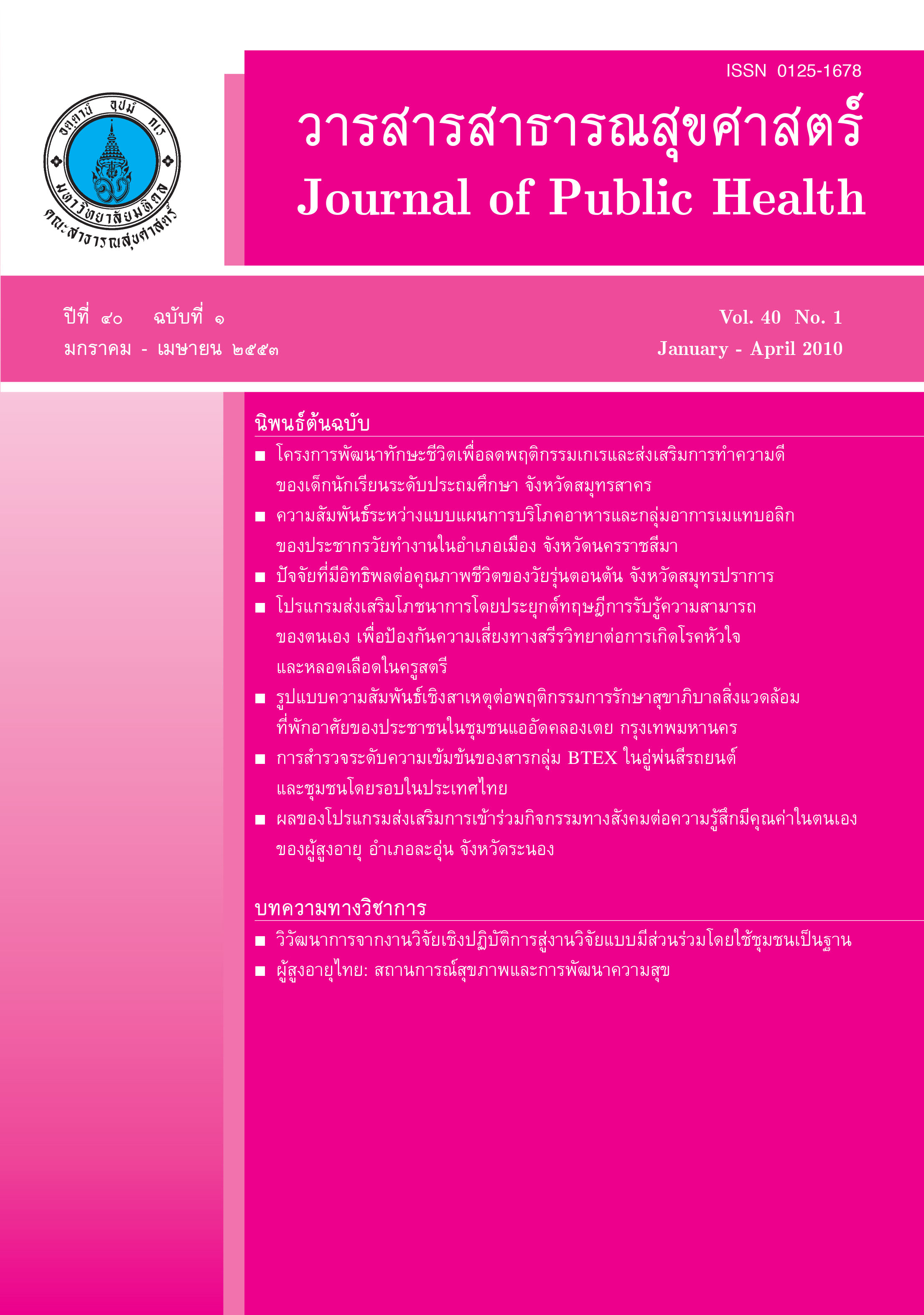ความสัมพันธ์ระหว่างแบบแผนการบริโภคอาหาร และกลุ่มอาการเมแทบอลิกของประชากรวัยทำงาน ในอำเภอเมือง จังหวัดนครราชสีมา
Keywords:
metabolic syndrome, prevalence, dietary pattern, กลุ่มอาการเมแทบอลิก, ความชุก, แบบแผนการบริโภคอาหารAbstract
ABSTRACT
The objective of this study was to examine the prevalence of metabolic syndrome and the relationship between dietary pattern and metabolic syndrome in working age population in Mueang District, Nakhon Ratchasima Province. The samples were 480 persons (230 males and 250 females) aged 20 years and over in Mueang District, Nakhon Ratchasima Province who received the annual health examination at Maharat Nakhon Ratchasima Hospital during December, 2008 through March, 2009. The diagnosis of metabolic syndrome was defined by the IDF and the NCEP ATP III criteria, with the modified waist circumference cut off points for Asian population. The data were collected from blood biochemical test, blood pressure measurement, waist circumference measurement, and questionnaires. The relationship between dietary pattern and metabolic syndrome was evaluated by multiple logistic regression. The results showed that the prevalence of metabolic syndrome defined by the IDF was 15.4% and by the NCEP ATP III was 17.9%. The analysis of the relationship between dietary pattern and metabolic syndrome showed that late night meal intake, alcohol consumption more than 30 grams per day, and bakery product intake more than 3 days per week were significantly associated with metabolic syndrome (p < 0.05). The findings from this study illustrated that the metabolic syndrome was one of health problem in urban population, and dietary pattern was an important factor that influenced the development of metabolic syndrome. Therefore, it is suggested that some dietary patterns should be modified, especially late night meal intake, alcohol consumption and high carbohydrate and fat intake to decrease the risk of metabolic syndrome.
Key words: metabolic syndrome, prevalence, dietary pattern
Downloads
Issue
Section
License
Creative Commons License CC-BY-ND


